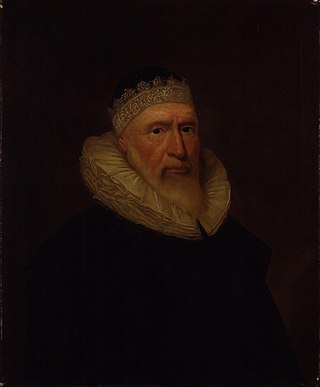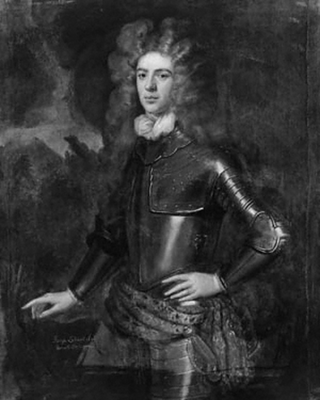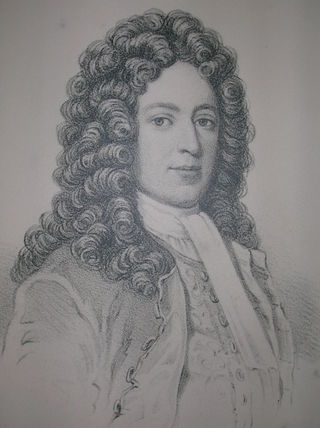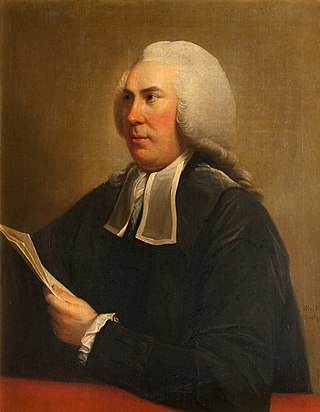Life
He was son of Sir James Lockhart XI of Lee, of a lairdly family, [1] by his wife, Jean Weir of Stonebyres, Lanarkshire. While still a young man he was a gentleman of the privy chamber to Charles I, and was knighted. He sat in the Scottish parliaments of 1630 and 1633 as commissioner for Lanarkshire, and was appointed lord of the articles on 20 June 1633. [2]
Lockhart did not sit in the parliament of 1641, perhaps because of his adherence to the Marquis of Hamilton. In 1644, and again in 1645, he contested Lanarkshire against Sir William Hamilton, and on the second occasion with success: on the first there was a disputed return decided, 5 June 1644, in favour of Hamilton. On 1 February 1645 he was appointed a commissioner of the exchequer, and on 2 July 1646 an ordinary lord of session in succession to Lord Durie the elder, who had died. [2]
Lockhart took part in the engagement for the relief of King Charles in 1648, and under the Marquis of Hamilton commanded a regiment at the battle of Preston. On 16 February 1649, he was deprived of his office by the Act of Classes, and was banished with others by an act of the estates, 4 June 1650. He petitioned for the removal of his sentence of banishment, and on 5 December of the same year his banishment was annulled. [2]
On his return Lockhart became a member of the committee of estates, was chosen to superintend the levy for the invasion of England under Charles II. On 28 August 1651 he was surprised by a party of English parliamentarian soldiers at Blyth, and was made prisoner. He taken to Broughty Castle, and from there to England, where he was eventually placed in the Tower of London. [2]
Several years later Lockhart's son Sir William Lockhart interceded, and he was set free. In 1661 was restored to his seat on the bench, was sworn of the privy council in Scotland, and was again appointed a commissioner of the exchequer. In the parliaments of 1661, 1665, and 1669 be represented Lanarkshire, and was throughout a lord of the articles. In 1662 he opposed the Ejection Act at Glasgow; he was said have been the only man sober in the assembly. [2]
In 1671 Lockhart succeeded John Home, Lord Renton as lord justice clerk, and held that post till he died in May 1674. [2]

Sir Julius Caesar was an English lawyer, judge and politician who sat in the House of Commons at various times between 1589 and 1622. He was also known as Julius Adelmare.

John Murray, 1st Duke of Atholl,, was a Scottish nobleman, politician, and officee. He served in numerous positions during his life, and fought in the Glorious Revolution for William III and Mary II.

Sir George Lockhart of Lee, of Carnwath, South Lanarkshire, also known as Lockhart of Carnwath, was a Scottish writer and Jacobite politician who sat in the Parliament of Scotland from 1702 to 1707 and as a Tory in the House of Commons from 1708 to 1715. He was a member of the Commission on the Union before 1707 but acted as an informant to his Jacobite colleagues and later wrote an anonymous memoir of its dealings. He supported the Stuart cause in the Jacobite rising of 1715.

Sir William Lockhart of Lee (1621–1675), was a Scottish soldier and diplomat who fought for the Covenanters during the 1638 to 1651 Wars of the Three Kingdoms. Following Royalist defeat in the 1642 to 1647 First English Civil War, Lockhart took part in negotiations between Charles I and Scottish Engagers, who agreed to restore him to the English throne.

The Lockharts of Lee are a Lanarkshire family that trace their descent from Sir Simon Locard. The family estate is the barony of Lee, centred on Lee Castle near Lanark, originally built around 1272 but much expanded in the 19th century.

Alexander Seton Montgomerie, 9th Earl of Eglinton was a Scottish peer, lord of the Eglinton Estate.

Carnwath is a moorland village on the southern edge of the Pentland Hills of South Lanarkshire, Scotland. The village lies about 30 mi (50 km) south of both Edinburgh and Glasgow. It is bounded by the North Medwyn and South Medwyn watercourses.

John Hay, 2nd Marquess of Tweeddale PC was a Scottish nobleman.

Clan Lockhart is an ancient family from the Scottish Lowlands.
Sir Patrick Houstoun of that Ilk, 1st Baronet was a Scottish politician who served as a member of the Parliament of Scotland for Renfrewshire in 1661 and Dunbartonshire in 1681–1682 and of the Convention of the Estates of Scotland for Dunbartonshire in 1678. He was knighted and then created a Baronet of Nova Scotia on 29 February 1668.

Sir George Lockhart of Carnwath was a Scottish advocate, judge and commissioner to parliament who was murdered.
The Treaty of Uxbridge was a significant but abortive negotiation in early 1645 to try to end the First English Civil War.
Sir Richard Lane, a.k.a. Edward Lane, was an English barrister who practised mostly in the Court of Exchequer. He acted as defence counsel to the Earl of Strafford when the Earl was impeached and attainted, and also represented Archbishop Williams and eleven other bishops who were imprisoned in the Tower of London in 1642.
Sir Alexander Falconer, 1st Lord Falconer of Halkerton (1595–1671), was a Scottish judge.

Lee Castle, also known as The Lee, is a castellated mansion in Auchenglen, a branch of the Clyde Valley in South Lanarkshire, Scotland. It is located 1.5 kilometres (0.93 mi) south of Braidwood, and 4 kilometres (2.5 mi) north-west of Lanark. Lee was the seat of the Lockharts of Lee from its establishment in the 13th century until 1919, though the present house is the result of rebuilding in the 19th century.

Alexander Murray, Lord Henderland was a Scottish judge and politician.
William Ramsay, 1st Earl of Dalhousie was a Scottish nobleman, army officer and politician.
William Hamilton was a Scottish antiquarian.
The Hon Alexander Lockhart, Lord Covington also styled as Alexander Lockhart of Craighouse was an 18th-century Scottish lawyer who rose to be a Senator of the College of Justice.

Sir James (de) Lindsay, 9th Lord of Crawford, Knight Banneret, Lord of Crawford, Kirkmichael, Wigton, Symontoun, and of many other baronies, claiming also to be Lord of Buchan, was a Scottish feudal lord.
This page is based on this
Wikipedia article Text is available under the
CC BY-SA 4.0 license; additional terms may apply.
Images, videos and audio are available under their respective licenses.
![]() This article incorporates text from a publication now in the public domain : Lee, Sidney, ed. (1893). "Lockhart, James". Dictionary of National Biography . Vol. 34. London: Smith, Elder & Co.
This article incorporates text from a publication now in the public domain : Lee, Sidney, ed. (1893). "Lockhart, James". Dictionary of National Biography . Vol. 34. London: Smith, Elder & Co.










